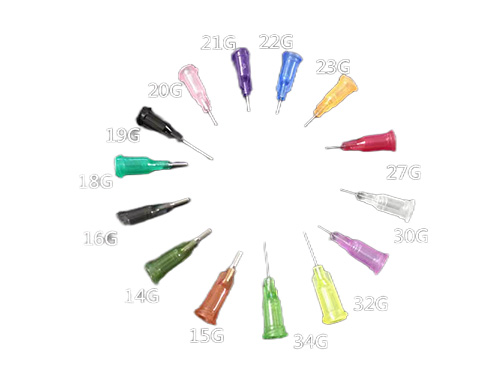Selecting the Right Seed Trays for Optimal Germination Success
2025-04-10 08:48:21
Seed trays may appear insignificant in the planting process, yet they play a crucial role in determining planting outcomes. A suitable seed tray provides an ideal growth environment for seeds, effectively addressing various challenges during the planting phase—from low germination rates to uneven seedling growth. Proper selection of trays ensures these issues are resolved, laying a solid foundation for subsequent crop growth and harvest.
I. Fundamental Understanding of Seed Trays
1.Definition and Concept
Seed trays are specialized containers designed for sowing and seedling cultivation. They typically feature multiple cells or holes, each accommodating one or more seeds, providing independent spaces for seed germination and early seedling growth. This facilitates centralized management and transplantation.
2.Development Overview
Early seed trays were simple, often made of wood or basic plastics with rudimentary structures. Advancements in agricultural technology have led to upgraded trays with diversified materials and more scientific designs. Modern trays now incorporate functions such as promoting root growth and enabling mechanical operations, evolving from basic sowing tools to sophisticated seedling cultivation equipment.
3.Working Principles
Seed trays create a relatively stable microenvironment to promote seed germination and seedling growth. Cells or holes fix seed positions, while drainage holes at the bottom effectively remove excess water, preventing seed rot and ensuring soil aeration. Different trays vary in cell shape, depth, and drainage design to accommodate the specific needs of different seed types and sowing requirements.
II. Notable Advantages of Seed Trays
1.Enhancing Germination Rates
Appropriate trays provide optimal temperature, humidity, and aeration. The stable micro-space maintains ideal moisture around seeds, preventing rapid evaporation or waterlogging. This ensures seeds absorb water under optimal conditions for successful germination, significantly improving success rates compared to random sowing.
2.Ensuring Uniform Seedling Growth
Cellular designs give each seedling independent growth space, avoiding competition for nutrients, water, and light. Consistent soil conditions in each cell promote uniform root development, ensuring consistent growth patterns across batches, simplifying unified management and transplantation.
3.Simplifying Transplantation and Management
Using trays allows seedlings to be transplanted with soil intact, minimizing root damage and improving survival rates. Centralized seedlings streamline watering, fertilization, and pest control, saving labor and time.
III. Seed Tray Selection Guide
1.Choosing Based on Planting Scale
Small-Scale Planting: Suitable for home gardeners or small-scale growers. Compact trays fit balconies or windowsills, with fewer cells for limited seed quantities and affordable prices.
Medium-Scale Planting: For slightly larger farms. Moderately sized trays balance seedling capacity and space efficiency, suitable for diverse crops.
Large-Scale Planting: Preferred by agricultural enterprises. Large trays with numerous cells meet high-volume needs and often integrate with mechanical equipment for efficiency.
2.Considering Crop Types
Vegetables: Small seeds require shallow cells for precise depth control, while large seeds need deeper cells for root development.
Flowers: Choose trays with good aeration (e.g., more drainage holes) for seeds requiring breathability. Special root systems may need cell shapes that accommodate root expansion.
Grains: High-volume crops need trays with many cells of moderate size. Durable materials are essential for handling during rapid growth.
3.Budget Considerations
Low Budget: Basic plastic trays suffice for temporary or budget-limited tasks, though durability and functionality may be compromised.
Medium Budget: Sturdy plastic or wooden trays offer better drainage, aeration, and portability.
High Budget: Professional trays with special materials or functions (e.g., root promotion, thermal insulation) suit large-scale or high-quality demands.
4.Evaluating Tray Features
Material: Plastic (durable, waterproof), wood (eco-friendly, breathable with anti-corrosion treatment), or paper (biodegradable for short-term use).
Design: Cells should facilitate seed placement and root growth; drainage systems must balance flow and soil retention. Ergonomic edges/handles and stackability are practical bonuses.
Brand Reputation: Established brands offer quality assurance. Consult reviews or growers for reliable recommendations.
IV. Proper Use and Maintenance of Seed Trays
1.Pre-Use Preparations
Inspection: Check for cracks, deformations, or clogged drainage holes. Ensure structural integrity.
Cleaning and Disinfection: Remove debris and disinfect with diluted solutions to eliminate pathogens.
Filling Medium: Use breathable, water-retaining, and fertile soil mixes. Fill cells evenly without over-compaction.
2.Operational Best Practices
Sowing Methods: Place large seeds individually; scatter small seeds evenly. Cover with medium 2-3x seed diameter.
Watering: Keep soil moist post-sowing, avoiding waterlogging. Use sprays or gentle streams to prevent seed displacement.
Environmental Placement: Most seeds require warmth and light; avoid extreme weather exposure.
3.Routine Maintenance
Cleaning: Remove residue post-use. Deep clean periodically to prevent disease.
Repairs: Patch minor cracks or reinforce loose parts. Replace severely damaged trays.
Storage: Stack in dry, ventilated areas away from sunlight and moisture. Protect wooden trays from humidity.
V. Conclusion
Seed trays are indispensable in modern cultivation. Proper selection and use significantly enhance planting efficiency and seedling quality. Growers should consider scale, crop type, budget, and features when choosing trays, adhering to operational and maintenance guidelines. By doing so, they maximize tray benefits, ensuring successful agricultural and horticultural outcomes.

It adopts electrical integration and can be started by pressing the fully automatic button ...

The XP750 seeder has stable performance, excellent product quality, simple and convenient o...

It adopts electrical integration and can be started by pressing the fully automatic button ...

Needle list Seed nozzle model Different models Sowing types are different...



